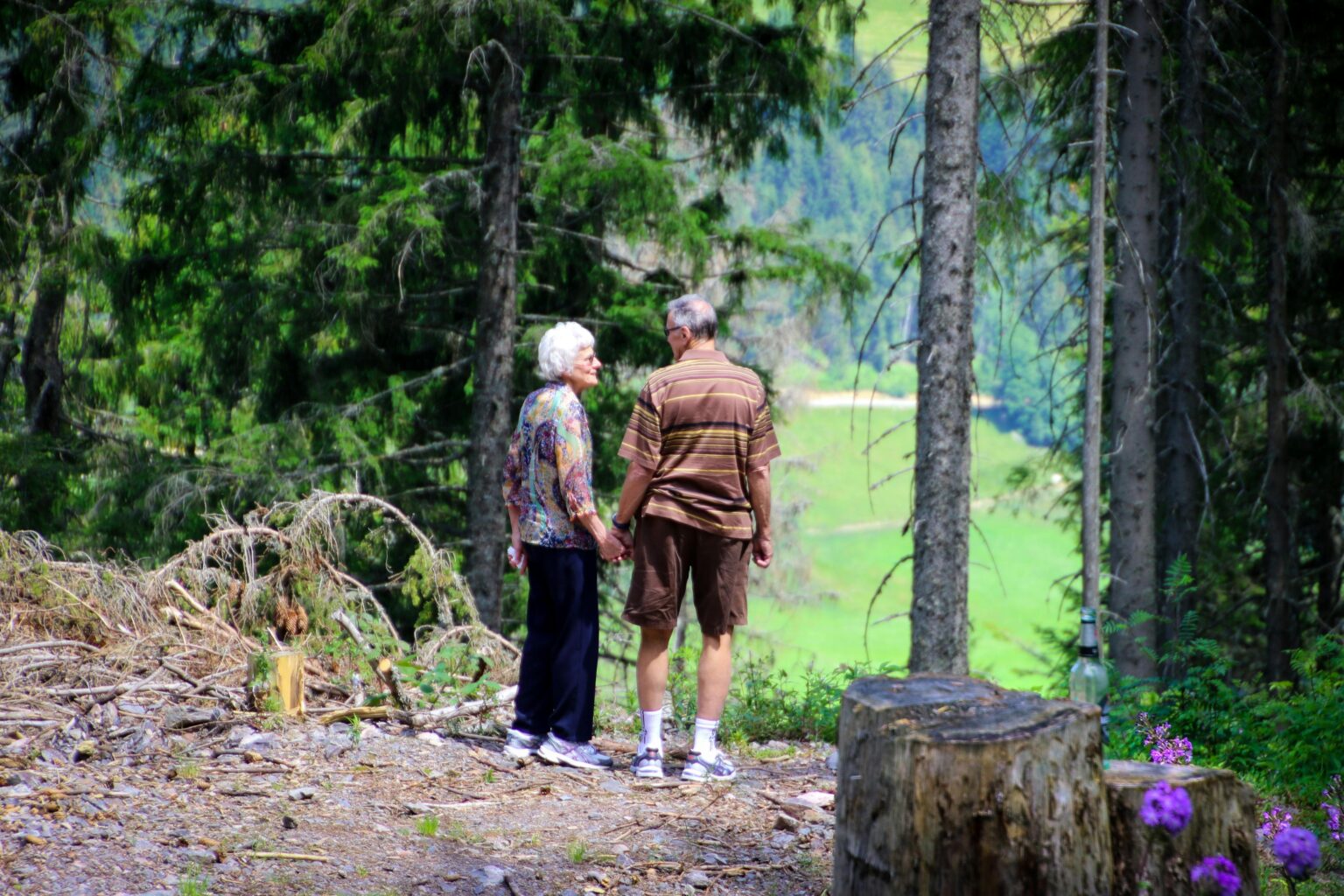
Topic Progress..
Overview of Topic 2.1 The Role ForestWell Plays in Conservation, Sustainability & Regenerative Tourism Practices demonstrates how ForestWell is a pioneering initiative that integrates forest conservation, sustainability, regenerative tourism, and holistic well-being to meet the needs of both people and the planet. It explains the concept of Regenerative and Being Regenerative and how it compares to sustainability, how it evolved and why it is important. By integrating regenerative concepts, strategies and practices, ForestWell enhances its value to eco-conscious travelers, supports local economies, and ensures the long-term viability of natural and community resources.
ForestWell represents a pioneering initiative at the intersection of forest conservation, sustainability, regenerative tourism, and holistic well-being, to address the evolving needs of people and the planet. It recognises forests as valuable providers of recreation resources and aims to promote their positive multifunctional role to people and planet while providing opportunities to capitalise on the growing demand for nature-based wellbeing experiences. ForestWell aims to equip individuals and businesses with the skills and knowledge they need to thrive in the forest tourism and well-being industry. It does this by also highlighting the importance of sustainable rural development which is economically, socially and environmentally responsible in supporting local communities and businesses. ForestWell champions practice conservation and environmental sustainability, with the ultimate goal to be regenerative in approaches. Advocating such responsible and sensitive approaches to ForestWell developments will safeguard the forest environment for current and future generations.
As with all human activities, the rise in outdoor recreation, especially in sensitive environments, presents challenges like habitat loss, degradation of natural and cultural features, and environmental deterioration. ForestWell addresses these challenges by prioritising the health and well-being of both the environment and local communities. By adopting regenerative practices, such as habitat restoration and community engagement, ForestWell ensures that recreational activities contribute positively to conservation efforts. This approach helps maintain its reputation as a premier provider of forest and nature based activities, attracting tourists who have a deeper appreciation for natural environments and a desire to protect them. Investing in recreational infrastructure not only stimulates economic growth but also supports social and geographic development, attracts responsible tourism therefore making it a wise investment for Europe’s future. ForestWell businesses can help minimise negative impacts and develop a culture of environmental stewardship. This approach not only enhances the visitor experience but also supports broader goals of sustainability and ecological balance.
Recommended Reading see exerts below: Outdoor Recreation and Environmental Concern: An Empirical Examination
Definition of Regenerative Tourism
There are different “schools” in the field of regenerative thinking and tourism, and therefore there are some differences in the contents. One kind of view is represented here, based on several sources, but there are also other kinds. As we learn more about the world around us all the time, experts such as Anna Pollock, Daniel Christian Wahl, Carlos Briceño and Martín Araneda, who have studied regenerative tourism for the longest time and published articles, do not want to give an unequivocal definition of regenerative tourism as Regeneration is a process.
Regenerative tourism is a holistic approach that seeks to restore, renew, and revitalise travel destinations’ social and ecological systems. Unlike sustainable tourism, which focuses on minimising negative impacts and maintaining the status quo, regenerative tourism aims to create conditions that enhance and regenerate the health and vitality of the visited places. (Source)
Instead of regenerative tourism, we could talk about tourism, which is an enabler of reforming and regenerating the place. When regenerative thinking is implemented, we look for answers to questions about how we produce well-being for visitors, local people and nature. Regeneration is place-bound and therefore its means are unique in each place. Carlos Briceño, Turismo Regenerativo 2024
“At its simplest, regeneration is about creating the fertile conditions conducive for life to thrive” Anna Pollock, 2019.
“Regenerative culture takes a holistic approach to the wellbeing of the entire ecosystem in which humans live, creating ‘thriving’ and ‘flourishing’ communities, who as the stewards, decide what happens there.” Earthchangers 2020.
“Regenerative tourism is a more balanced approach to development that puts people, nature and economy on the same level.” Dianne Dredge, Regenerative Tourism By Design, Tourism Collab 2021
While sustainable tourism emphasises reducing the environmental footprint and maintaining a balance, regenerative tourism takes a step further by actively contributing to improving and healing ecosystems and communities. Sustainable tourism practices include recycling programs, reducing energy consumption, and supporting local economies without harming the environment. In contrast, regenerative tourism involves restoring natural habitats, promoting biodiversity, and engaging community-led development projects that empower local populations and enhance their quality of life.
The fundamental difference lies in the intent and outcomes: sustainable tourism seeks not to harm, whereas regenerative tourism aspires to do good and leave a positive legacy. By adopting regenerative tourism practices, stakeholders in the travel industry can play a crucial role in addressing global challenges such as climate change, biodiversity loss, and social inequities, ensuring that tourism becomes a force for good in the world.
Figure 2: Features of regenerative tourism compared to normal and sustainable tourism
Holistic Approach Regenerative tourism is built on leaving a place better than you found it. This approach emphasises not just minimising harm but actively improving a destination’s ecological, social, and economic conditions. Ecologically, this might involve restoring natural habitats and promoting biodiversity. Socially, it can include preserving cultural heritage and improving local living standards. Economically, it supports sustainable livelihoods and resilient local economies.
Community Involvement Local communities play a central role in regenerative tourism. Their deep knowledge of the area and its needs is crucial for creating compelling and respectful tourism practices. Successful initiatives often involve community-led projects, such as restoring natural sites, cultural preservation programs, and local enterprise development. For example, many Māori communities in New Zealand lead regenerative tourism projects that restore indigenous lands and share cultural knowledge with visitors.
Long-term Impact Regenerative tourism prioritises long-term benefits over short-term gains. The focus is on creating lasting positive changes that benefit future generations. This approach ensures that tourism activities contribute to the ongoing health and vitality of the destination rather than depleting its resources. Regenerative tourism aims to create enduring legacies beyond immediate tourist interactions by promoting sustainable ecosystems, resilient communities, and thriving economies.
Several key factors have contributed to the emergence and growth of regenerative tourism:
Environmental Crises: The increasing frequency and severity of ecological crises, such as wildfires, floods, and hurricanes, have highlighted the urgent need for more effective and impactful ecological stewardship. Regenerative tourism responds to these crises by promoting practices that restore natural ecosystems and increase their resilience.
Consumer Demand for Eco-friendly Travel: Modern travelers are more informed and conscious of their environmental and social footprints. There is a growing demand for travel experiences that minimise harm and contribute positively to the destinations. This shift in consumer preference has driven the travel industry to adopt regenerative practices.
Scientific and Technological Advancements: Advances in science and technology have provided new tools and methods for environmental restoration and community development. These advancements have made regenerative tourism more feasible and practical, from innovative conservation techniques to digital platforms that facilitate community engagement.
Global Policy and Advocacy: International agreements and policies addressing climate change and promoting sustainable development have also played a role. Organisations and governments increasingly recognise the potential of regenerative tourism to contribute to global sustainability goals, leading to supportive policies and funding for regenerative projects.
Local Community Advocacy: Local communities, often at the front line of tourism impacts, have become strong advocates for regenerative practices. Their involvement and leadership are crucial in shaping tourism that respects and revitalises their social and environmental fabric.
